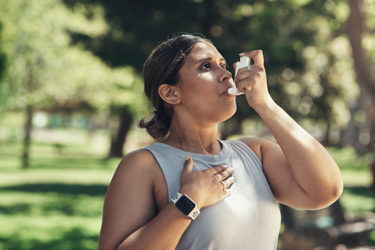Six Inhaler Sustainability Myths – And Why They Must Be Busted
By Louise Righton, Global Strategic Marketing Leader–Inhaled Drug Delivery, Kindeva Drug Delivery

Healthcare is a significant contributor to the global carbon footprint – this has been calculated to be equivalent to 4.4% of net emissions in 2014.4 While more than half of these emissions are from energy use, medicines also contribute; inhalers, particularly pressurised metered-dose inhalers (pMDIs), have come under scrutiny due to the environmental impact of the propellants used. While this scrutiny is positive because it will encourage change, much of the debate is narrowly focused on the comparative global warming potential (GWP) of different device types. As a result, advocacy too often provides blanket recommendations that amount to “device switching” – the notion that propellant-free devices, such as dry powder inhalers(DPIs) and soft mist inhalers (SMIs), are categorically superior to pMDIs, regardless of patient considerations.
This focus on reducing the carbon footprint of the inhaler market by switching from pMDIs to alternative devices may have unintended negative consequences for the NHS’s net-zero ambition.7 For all inhaler types, there is an impact on the environment to consider at each stage of the inhaler lifecycle, from manufacturing, supply and usage by the patient to appropriate disposal when the labelled number of doses have been taken or the inhaler is no longer needed.8
Despite the industry’s commitment to decarbonisation, in the form of investment in reformulation and manufacturing technology,11–15 a narrative has evolved that pMDIs are inherently “bad” and must be replaced as quickly as possible by alternative inhaler types. There are several flaws in the argument that the solution to the carbon footprint of respiratory disease is to be found in a rapid switchover from pMDIs to DPIs. Therefore, the prevailing “myths” must be examined and addressed to achieve the shared industry vision of a decarbonised inhaler market.
Get unlimited access to:
Enter your credentials below to log in. Not yet a member of Outsourced Pharma? Subscribe today.
